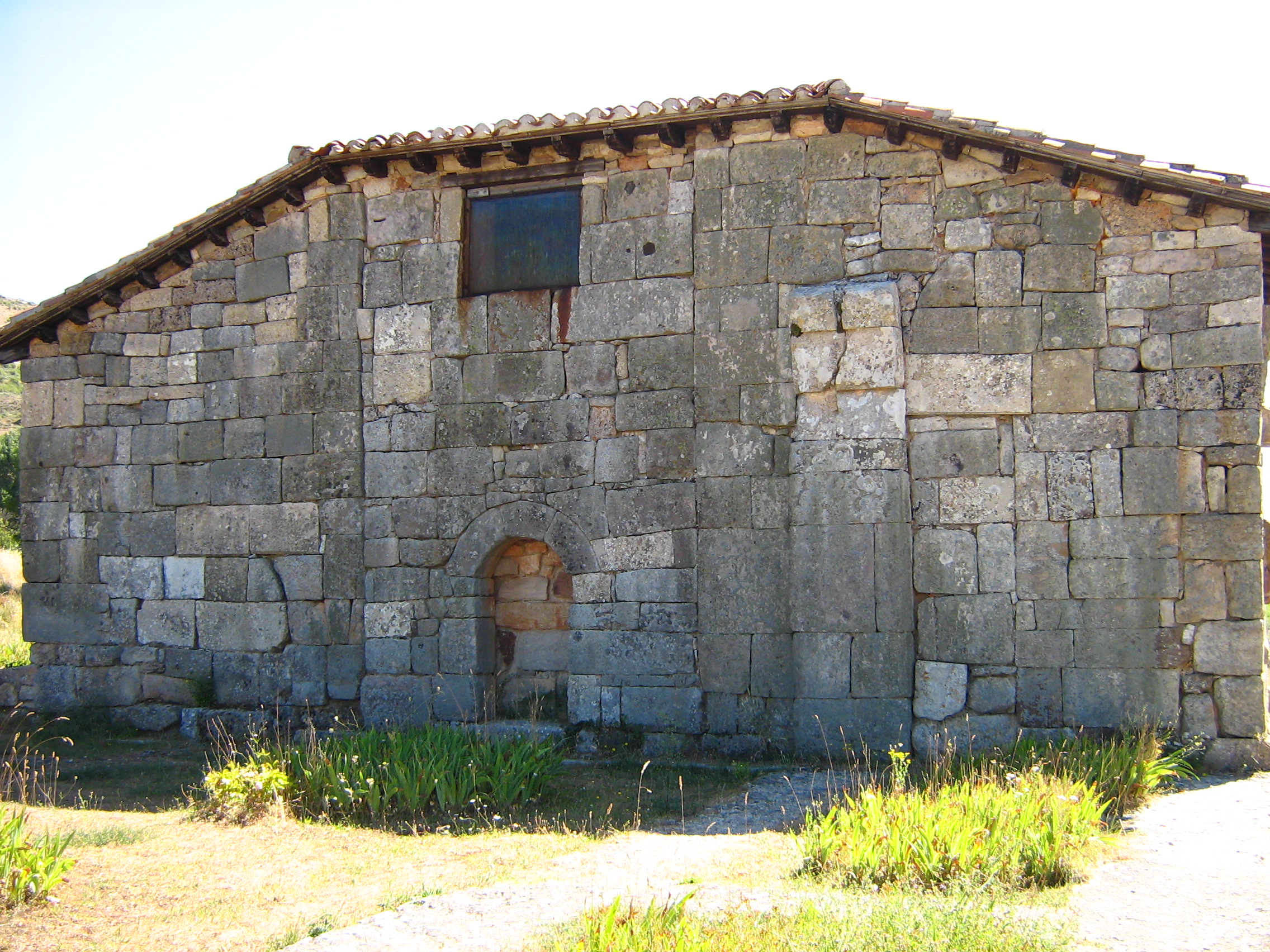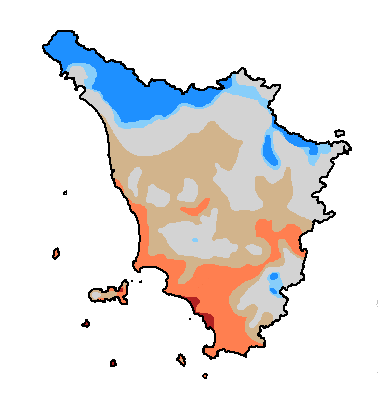|
Camaldoli
Camaldoli () is a ''frazione'' of the ''comune'' of Poppi, in Tuscany, Italy. It is mostly known as the ancestral seat of the Camaldolese monastic order, originated in the eponymous hermitage, which can still be visited. The name was derived from Tedald's diploma of 1027 in which he writes that the church is located "in loco qui dicitur Campo Malduli" - 'in a place which is named Maldolo's field'. Overview The Holy Hermitage and Monastery of Camaldoli is situated in an ancient forest in the Tuscan Apennines. It was founded about 1012 by Saint Romuald, a Benedictine monk, with the permission of Tedald, Bishop of Arezzo. In the monastery of Camaldoli there is a welcoming room, a great hall, and an old style pharmacy. The pharmacy was originally a laboratory where monks studied and worked with medicinal herbs. These medicines would be used in the old hospital which can still be visited today. The precious walnut decor dates back to 1543. The church, meanwhile, was constructed in ... [...More Info...] [...Related Items...] OR: [Wikipedia] [Google] [Baidu] |
Codice Di Camaldoli
Codice di Camaldoli (''The Code of Camaldoli'') is a document planning economic policy drawn up in July 1943 by members of the Italian Catholic forces. It served as an inspiration and guideline for economic policy of the Christian Democrats, which was being formed at that time and that after the Second World War was for several legislatures the biggest party of government. Participants The document was elaborated at the end of a week of study held from 18 to 23 July 1943 in the monastery of Camaldoli in Casentino. About fifty people from the Italian Catholic Action and the Catholic Institute of Social Work participated. The jobs were coordinated by Adriano Bernareggi, Bishop of Bergamo and ecclesiastical assistant of the graduates of Catholic Action. The guiding principles were worked out by Sergio Paronetto, Pasquale Saraceno and Ezio Vanoni. The definitive drafting of the Code was attended by Mario Ferrari Aggradi, Paolo Emilio Taviani, Guido Gonella, Giuseppe Capograss ... [...More Info...] [...Related Items...] OR: [Wikipedia] [Google] [Baidu] |
Camaldolese Monasteries In Italy
The Camaldolese Hermits of Mount Corona ( la, Congregatio Eremitarum Camaldulensium Montis Coronae), commonly called Camaldolese is a monastic order of Pontifical Right for men founded by Saint Romuald. Their name is derived from the Holy Hermitage ( it, Sacro Eremo) of Camaldoli, high in the mountains of central Italy, near the city of Arezzo. Its members add the nominal letters E.C.M.C. after their names to indicate their membership in the congregation. Apart from the Roman Catholic congregations, ecumenical Christian hermitages with a Camaldolese spirituality have arisen as well. History The Camaldolese were established through the efforts of the Italian monk Saint Romuald (). His reform sought to renew and integrate the eremitical tradition of monastic life with that of the cenobium. In his youth, Romuald became acquainted with the three major schools of Western monastic tradition. The monastery where he entered the Order, Sant' Apollinare in Classe, was a traditional Be ... [...More Info...] [...Related Items...] OR: [Wikipedia] [Google] [Baidu] |
Camaldolese
The Camaldolese Hermits of Mount Corona ( la, Congregatio Eremitarum Camaldulensium Montis Coronae), commonly called Camaldolese is a monastic order of Pontifical Right for men founded by Saint Romuald. Their name is derived from the Holy Hermitage ( it, Sacro Eremo) of Camaldoli, high in the mountains of central Italy, near the city of Arezzo. Its members add the nominal letters E.C.M.C. after their names to indicate their membership in the congregation. Apart from the Roman Catholic congregations, ecumenical Christian hermitages with a Camaldolese spirituality have arisen as well. History The Camaldolese were established through the efforts of the Italian monk Saint Romuald (). His reform sought to renew and integrate the eremitical tradition of monastic life with that of the cenobium. In his youth, Romuald became acquainted with the three major schools of Western monastic tradition. The monastery where he entered the Order, Sant' Apollinare in Classe, was a traditiona ... [...More Info...] [...Related Items...] OR: [Wikipedia] [Google] [Baidu] |
Poppi
Poppi () is a ''comune'' (municipality) in the Province of Arezzo in the Italian region Tuscany, located about east of Florence and about northwest of Arezzo. Poppi borders the following municipalities: Bibbiena, Castel Focognano, Castel San Niccolò, Chiusi della Verna, Ortignano Raggiolo, Pratovecchio Stia. Main sights *Poppi Castle, or the ''Castello dei Conti Guidi'', the main building in the Casentino, known from 1191, was owned by the Counts Guidi. It has additions by Arnolfo di Cambio. It has a courtyard, an external staircase, its chapel with frescos and its library containing rare manuscripts and incunabula.''Occhi sul Casentino'', Chiusi della Verna e Poppi, Azienda Autonoma di Soggiorno e Tourismo di Bibbiena, 1980 . * Hermitage of Camaldoli, the ancestral seat of the Camaldolese monastic order. * Madonna del Morbo Sanctuary in the centre of the town, containing a painting of the Virgin attributed to Filippino Lippi. *The annual festival commences in the u ... [...More Info...] [...Related Items...] OR: [Wikipedia] [Google] [Baidu] |
Tedald, Bishop Of Arezzo
Tedald (c. 990 – 12 June 1036), also known as Theodald, Theodaldus, Tedaldus, Tedaldo, or Teodaldo, was the forty-third Bishop of Arezzo from 1023 until his death. Tedald came from the highest ranks of the nobility of central Italy. He was the second son of Tedald, Count of Brescia, of the House of Canossa, and Willa, possible daughter of Theobald II of Spoleto. His elder brother was Boniface III of Tuscany. He was the uncle of Matilda of Tuscany, who was born after his death. As bishop Tedald encouraged and protected the monastic life. He granted permission for Saint Romuald to found a monastery and a hermitage (''eremo'') at Camaldoli in his diocese (c. 1024). Tedald also sponsored the work of the monk Guido of Arezzo, whose treatise on music theory, the ''Micrologus'', was dedicated to him. At Tedald's invitation, Guido took up the training of the cathedral singers at Arezzo around 1025. The bishop also supported the architect Maginardo, who added to the cathedral d ... [...More Info...] [...Related Items...] OR: [Wikipedia] [Google] [Baidu] |
Hermitage (religious Retreat)
A hermitage most authentically refers to a place where a hermit lives in seclusion from the world, or a building or settlement where a person or a group of people lived religiously, in seclusion. Particularly as a name or part of the name of properties its meaning is often imprecise, harking to a distant period of local history, components of the building material, or recalling any former sanctuary or holy place. Secondary churches or establishments run from a monastery were often called "hermitages". In the 18th century, some owners of English country houses adorned their gardens with a "hermitage", sometimes a Gothic ruin, but sometimes, as at Painshill Park, a romantic hut which a "hermit" was recruited to occupy. The so-called Ermita de San Pelayo y San Isidoro is the ruins of a Romanesque church of Ávila, Spain that ended up several hundred miles away, to feature in the Buen Retiro Park in Madrid. Western Christian tradition A hermitage is any type of domestic dwe ... [...More Info...] [...Related Items...] OR: [Wikipedia] [Google] [Baidu] |
Romuald Of Camaldoli
Romuald ( la, Romualdus; 951 – traditionally 19 June, c. 1025/27 AD) was the founder of the Camaldolese order and a major figure in the eleventh-century "Renaissance of eremitical asceticism".John Howe, "The Awesome Hermit: The Symbolic Significance of the Hermit as a Possible Research Perspective", ''Numen'' 30.1 (July 1983:106-119) p 106, noting Ernst Werner, ''Pauperi Christi: Studien zu socialreligiosen Bewegungen in Zeitalter des ersten Kreuzzuges'' (Leipzig) 1956; Howe also notes the contemporary examples of Peter the Hermit, leader of a crusade; Norbert of Xanten, founder of the Praemostratensians, and Henry of Lausanne, declared a heretic. Romuald spent about 30 years traversing Italy, founding and reforming monasteries and hermitages. Life According to the ''vita'' by Peter Damian, written about fifteen years after Romuald's death, Romuald was born in Ravenna, in northeastern Italy, to the aristocratic Onesti family. His father was Sergius degli Onesti and his mo ... [...More Info...] [...Related Items...] OR: [Wikipedia] [Google] [Baidu] |
Italy
Italy ( it, Italia ), officially the Italian Republic, ) or the Republic of Italy, is a country in Southern Europe. It is located in the middle of the Mediterranean Sea, and its territory largely coincides with the homonymous geographical region. Italy is also considered part of Western Europe, and shares land borders with France, Switzerland, Austria, Slovenia and the enclaved microstates of Vatican City and San Marino. It has a territorial exclave in Switzerland, Campione. Italy covers an area of , with a population of over 60 million. It is the third-most populous member state of the European Union, the sixth-most populous country in Europe, and the tenth-largest country in the continent by land area. Italy's capital and largest city is Rome. Italy was the native place of many civilizations such as the Italic peoples and the Etruscans, while due to its central geographic location in Southern Europe and the Mediterranean, the country has also historically b ... [...More Info...] [...Related Items...] OR: [Wikipedia] [Google] [Baidu] |
Tuscany
it, Toscano (man) it, Toscana (woman) , population_note = , population_blank1_title = , population_blank1 = , demographics_type1 = Citizenship , demographics1_footnotes = , demographics1_title1 = Italian , demographics1_info1 = 90% , demographics1_title2 = , demographics1_info2 = , demographics1_title3 = , demographics1_info3 = , timezone1 = CET , utc_offset1 = +1 , timezone1_DST = CEST , utc_offset1_DST = +2 , postal_code_type = , postal_code = , area_code_type = ISO 3166 code , area_code = IT-52 , blank_name_sec1 = GDP (nominal) , blank_info_sec1 = €118 billion (2018) , blank1_name_sec1 = GDP per capita , blank1_info_sec1 = €31,500 (2018) , blank2_name_sec1 = HDI (2019) , blank2_info_sec1 = 0.907 • 6th of 21 , blank_name_sec2 = NUTS Region , blank_info_sec2 ... [...More Info...] [...Related Items...] OR: [Wikipedia] [Google] [Baidu] |
Giorgio Vasari
Giorgio Vasari (, also , ; 30 July 1511 – 27 June 1574) was an Italian Renaissance Master, who worked as a painter, architect, engineer, writer, and historian, who is best known for his work '' The Lives of the Most Excellent Painters, Sculptors, and Architects'', considered the ideological foundation of all art-historical writing, and the basis for biographies of several Renaissance artists, including Leonardo da Vinci and Michelangelo. Vasari designed the ''Tomb of Michelangelo'' in the Basilica of Santa Croce, Florence that was completed in 1578. Based on Vasari's text in print about Giotto's new manner of painting as a ''rinascita'' (rebirth), author Jules Michelet in his ''Histoire de France'' (1835) suggested adoption of Vasari's concept, using the term '' Renaissance'' (rebirth, in French) to distinguish the cultural change. The term was adopted thereafter in historiography and still is in use today. Life Vasari was born prematurely on 30 July 1511 in Arezzo, Tus ... [...More Info...] [...Related Items...] OR: [Wikipedia] [Google] [Baidu] |






